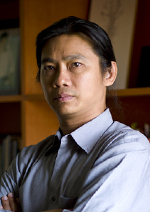When Malaysian Airlines Flight 370 disappeared on March 8, one of the many serious issues it raised about the safety of international travel is the fact that there is a thriving worldwide trade in stolen passports.
As investigators started trying to determine the cause of the incident, one of the first things they discovered was that two of the passengers were Iranian nationals traveling with EU passports that had been stolen in Thailand. Although it turned out that the two men were not terrorists, the ease with which they were able to pass through airport security with their fake identities was unsettling for many.
It is even more disturbing to learn that the world is awash in false documents. According to a senior member of Thailand’s National Security Council who spoke to the London-based newspaper The Independent, around 10,000 passports are lost or stolen in the country each year, many of which end up in the hands of foreign forgers.
Thailand’s huge fake-document market undoubtedly caters to criminals of every description, from mafia types to human traffickers and terrorists. But among those who have used the services of these passport forgers are many individuals whose only goal is to escape poverty or repression in their home countries.
For many years, Myanmar was one of the world’s leading sources of such people. And among the millions who fled in search of work or freedom, there were countless thousands who needed to assume new identities.
In the early 1990s, as an exile living in Thailand, I witnessed the operations of a passport mill working out of a small apartment in Bangkok. A small machine was used to press photos, visa stamps and stickers into blank passports. Everything was scattered all over the room, as the workers in this “passport-making factory” cranked out one fake passport after another to meet demand from Myanmar nationals who needed to extend their stay in Thailand or who planned to take their chances in Japan or some other country that offered a shot at a better life.
In those days, Myanmar exiles had one of two choices: stay in the jungle along the Thai-Myanmar border, or venture into Thailand’s cities to try to make contact with foreign governments and organizations that wanted to know more about what was happening in the military-ruled hermit state that had suddenly and unexpectedly exploded in 1988.
For those of us who took the latter course, a passport was indispensable. Since there was certainly no chance that the government would issue documents to “destructive elements” like us, the only option was a fake passport.
For around US$500 (a fee that rose steadily over the years, as the quality of the passports improved), agents could provide you with a Myanmar passport complete with a Thai visa, delivered within one month. It was a lucrative business, and one that provided a measure of security for those without any legal documentation.

That isn’t to say, however, that it was without risks. There were more than a few unlucky holders of these fake passports who landed in Bangkok’s infamous Immigration Detention Center. Even in Thailand, with its vast false-documents industry, traveling with a fake passport is considered a serious crime.
I know well how nerve-wracking it can be to go through immigration with a passport bearing a name and personal details that were not my own. Every time I entered or left Thailand or another country, my heartbeat and my mind raced as I tried to think of what I should say if the immigration officer challenged me. Of course, I could always produce the invitation letters that I had received from whichever institution or government had asked me to attend or speak at some event abroad, but I was still always acutely aware of the fact that technically, I was breaking the law and could face severe punishment if caught.
These days, like many other long-time exiles, I hold a legal travel document from a country sympathetic to the plight of Myanmar’s political dissidents. There are several countries, mostly in the West, that have issued such documents to help those of us who until recently could not return to Myanmar to do our work.
Ironically, these documents now serve as an obstacle to former exiles who want to return to their country, as the Myanmar government regards such document-holders as foreign nationals who must get visas to travel to the country of their birth. From the government’s point of view, it would have been better if we had remained undocumented or continued to risk using fake passports until such time as the country’s rulers saw fit to invite us back to participate in their much-vaunted reforms.
Meanwhile, demand for fake Myanmar passports has declined, but not died out entirely. As long as there are many who remain dissatisfied with the pace and direction of change in the country, the trade will likely continue.
After decades of serving as an important lifeline for dissidents, however, there is now a danger that forged Myanmar passports could come to be used for more nefarious purposes. It would be all too easy, for example, for a terrorist to acquire and travel with a Myanmar passport to conceal his true identity.
We can only hope, then, that Myanmar—a country that is increasingly on the radar of extremist groups because of its mistreatment of Muslims—doesn’t suffer yet another tragedy before it has even had a chance to recover from the years of abuse that it suffered at the hands of its rulers.
Sadly, as the fate of Malaysian Airlines Flight 370 reveals, there are few certainties in this world. But one thing we do know is that the legacy of brutal misrule is not something that disappears overnight, especially when the work of ending it has barely begun.
Aung Zaw is the founding editor-in- chief of The Irrawaddy.
This article first appeared in the April 2014 issue of The Irrawaddy’s print magazine.
















